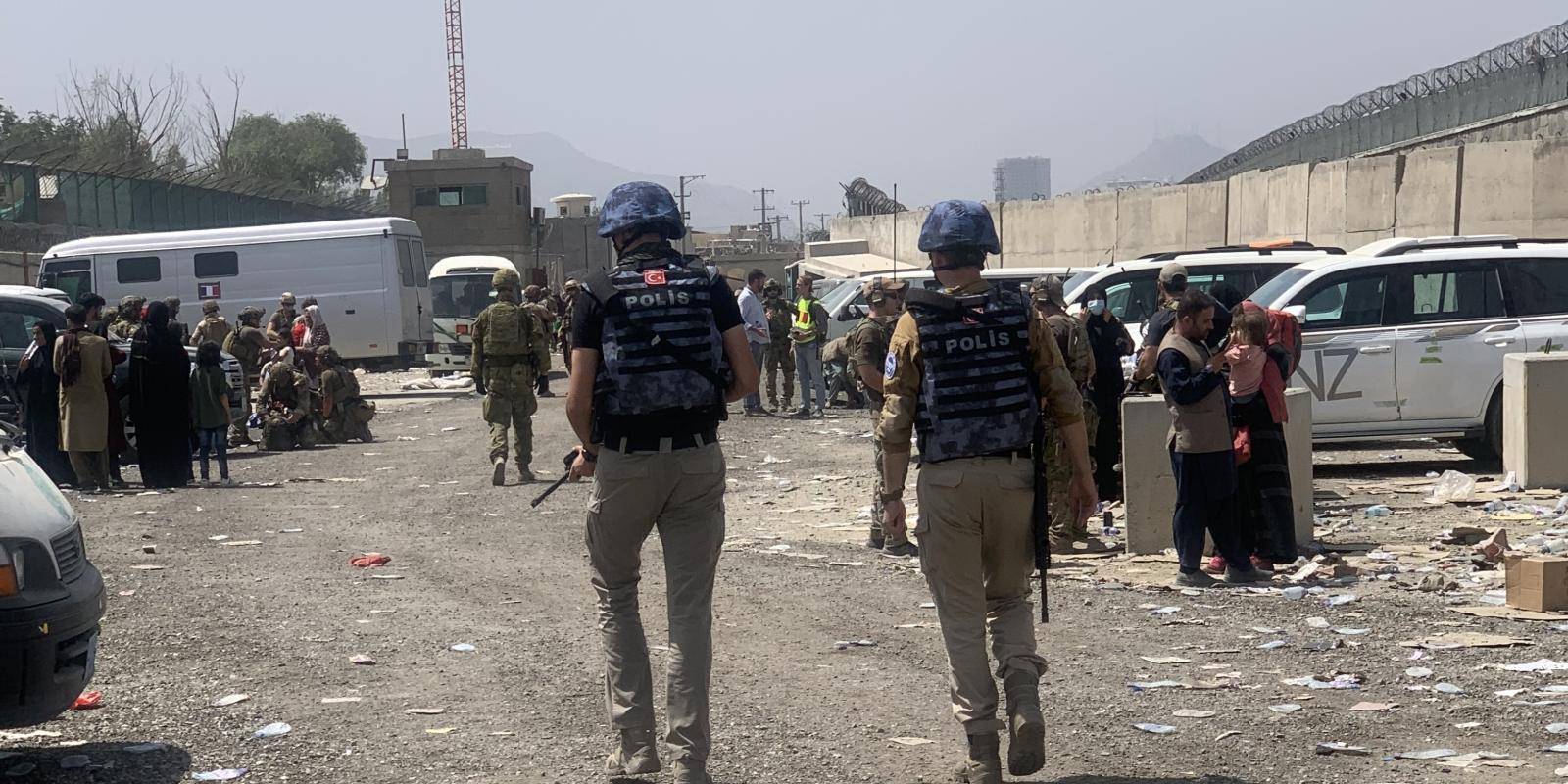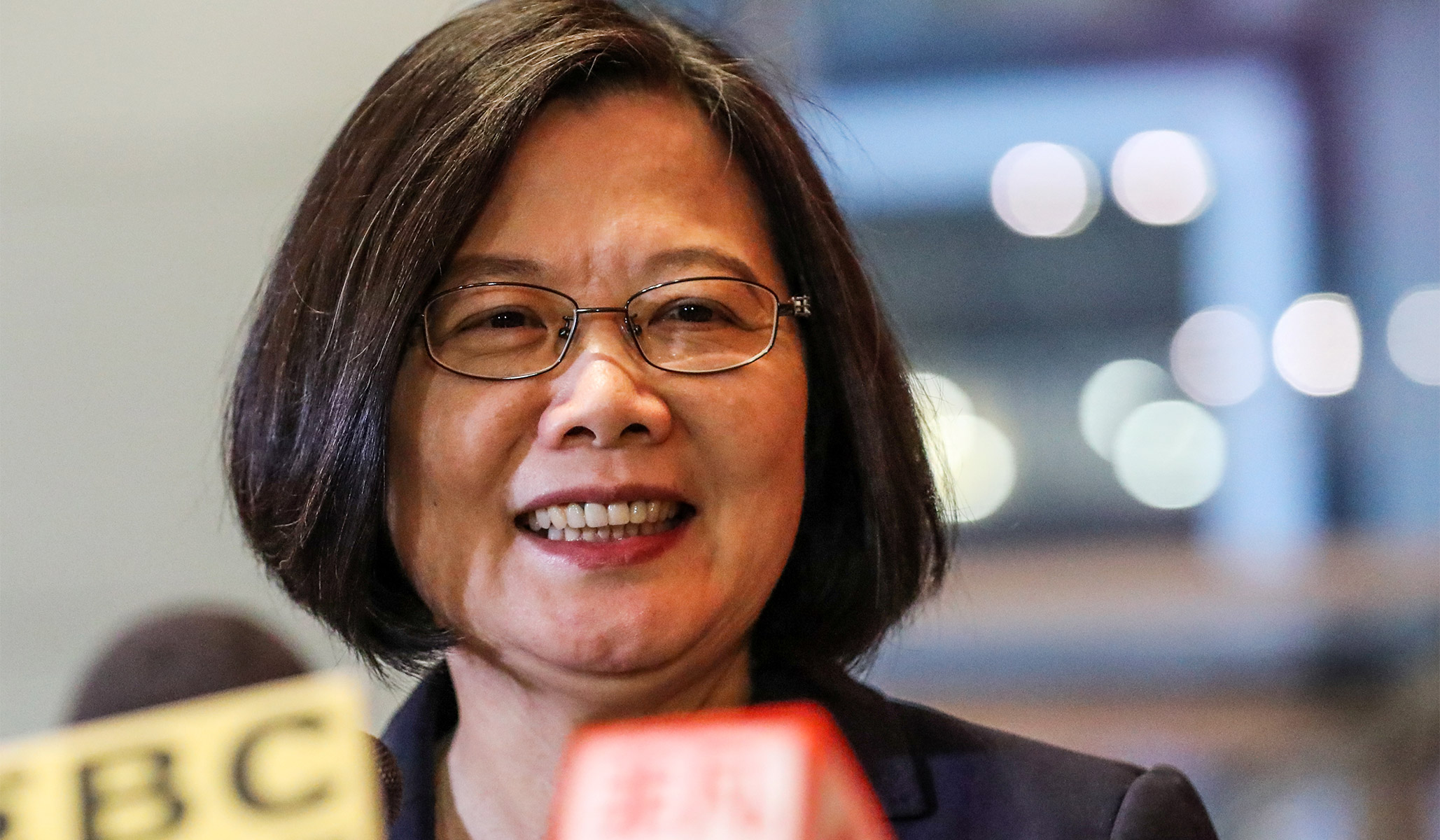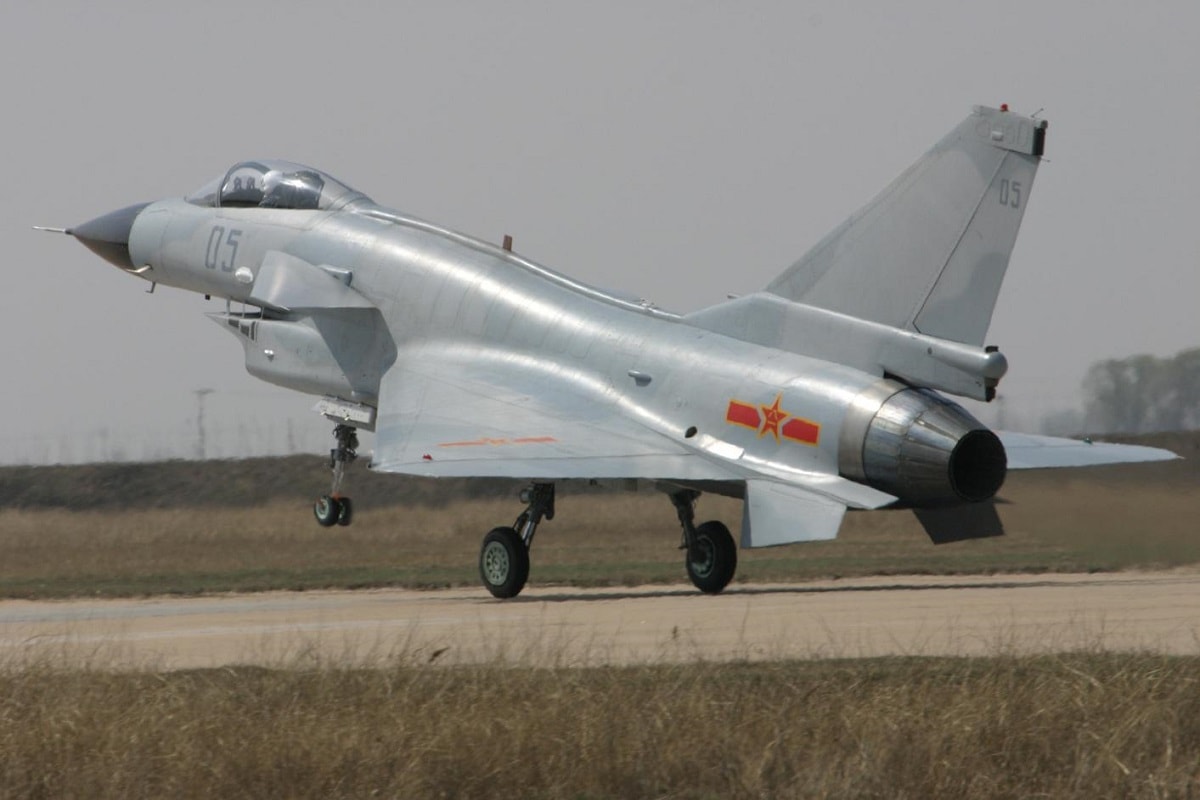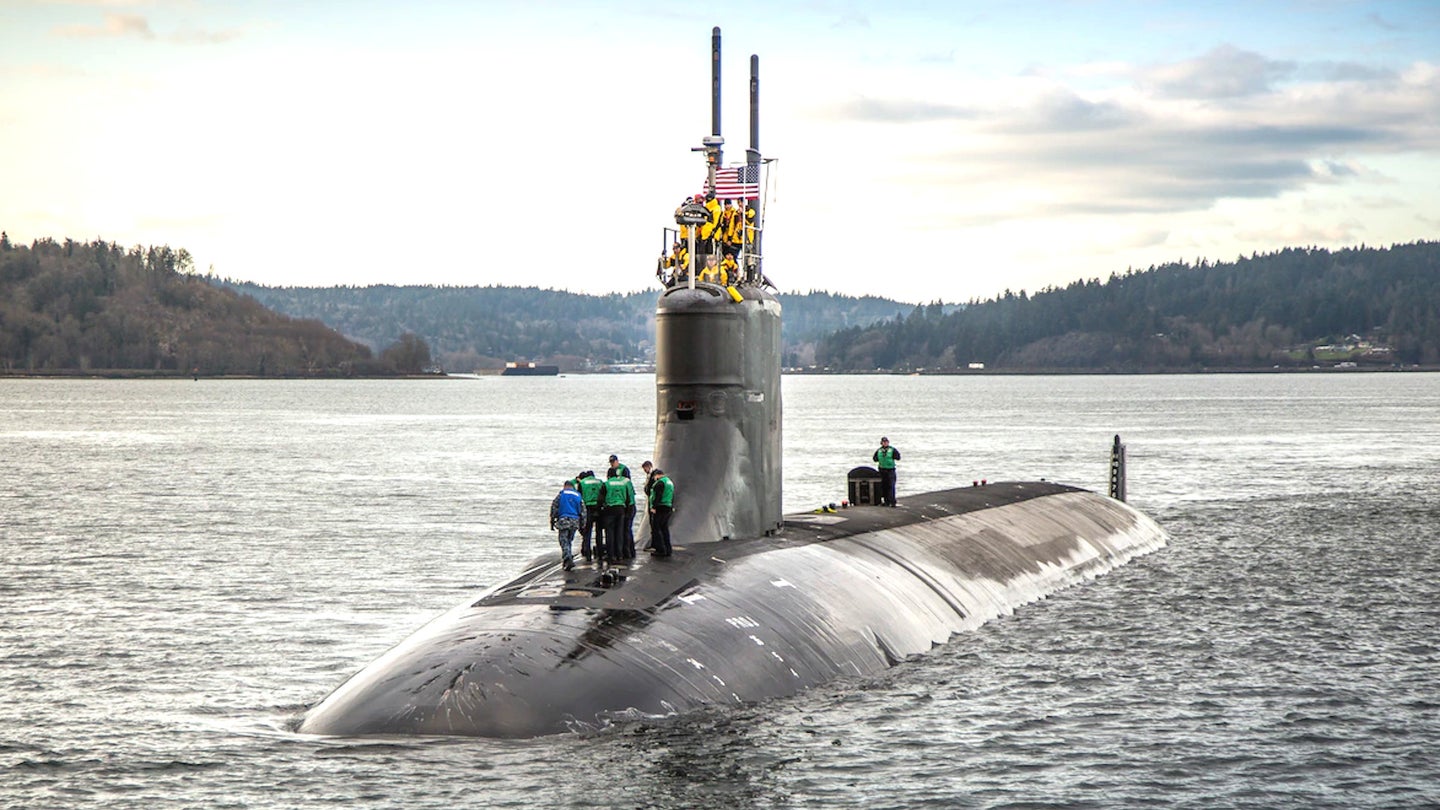Christoph Reuter und Thore Schröder
The narrow, unpaved road winds though a world of rock for hours on end, navigable only at a snail’s pace. Rocky, weathered crags line the horizon, their color ranging from a pale ochre to dark granite in the glistening sun, as though all life here was extinguished long ago. Only a couple of crows can be seen rising on the thermals along the cliff walls.
This makes what appears far below all the more intense as we round a bend: a bright, emerald-green strip of trees, fields and lush greenery along meandering waterways. A hidden paradise created over four decades by farmers who dug wells and hundreds of meters of subterranean channels, transforming the valley into arable farmland.
But down below, in the Tagabdar Valley, among the pomegranate trees, cornfields and blackberry bushes, family patriarchs step fearfully out of their homes. Sixteen days earlier, says village chief Said Iqbal, in a story echoed by several of the farmers, the Taliban showed up in captured police pickups. The armed men called together the village’s men and delivered them an ultimatum: All residents, they were told, had 15 days to leave their homes, land and belongings and disappear. The valley they had farmed for several decades and had never been claimed by others, no longer belonged to them, they were told. The Taliban ordered them to leave on their own, otherwise they would be driven out with force. Deadly force, if necessary.
 Bild vergrößern Farmland in the Tagabdar Valley Foto: Juan Carlos / DER SPIEGEL
Bild vergrößern Farmland in the Tagabdar Valley Foto: Juan Carlos / DER SPIEGEL
"But where are we to go?” one of the men asked. Doesn’t matter, the Taliban answered, just depart this Garden of Eden surrounded by an inhospitable landscape. Then the Taliban left. The ultimatum supposedly expired yesterday. Some of the roughly 300 families – around 2,000 people – have already left Tagabdar, they say. And those that remain listen in fear to each approaching vehicle.
Four days after DER SPIEGEL’s visit to the valley, the rest were driven out, fleeing to relatives in other villages, to the cities or to the slums of Kabul.
The brutal landgrab in the Tagabdar Valley and two other villages in the area began in early September. Over the subsequent weeks, the expulsions were expanded to include more than a dozen other villages in the remote and difficult-to-access mountains of Daykundi, a province in central Afghanistan. Taken together, they suggest a conflict which could ultimately lead to ethnic cleansing across the country if Afghanistan’s largest ethnicity, the Pashtun, feel emboldened by the Taliban victory to take land and rights from minorities.
Breaking the Cycle of Violence
Afghanistan has been a fragmented country ever since gaining independence in 1919, not just because of its different religious confessions. The opposing ethnic groups in the country have repeatedly gone to war, often out of conviction that they must avenge an injustice visited upon them – and in doing so, committed yet more injustices.
Should the Taliban wish to hold onto power and, beyond that, establish peace in the country, they must break this cycle of violence.
But the victims of the expulsions in Daykundi have been almost exclusively Hazara, members of the mostly Shiite minority long been considered by the Taliban to be infidels and second-class humans.
Their more recent history is one of fear and suffering. The Hazara are thought to have descended from Mongolian migrants and today makes up around a fifth of the Afghan population. They primarily live in the mountains and high plains of central Afghanistan.
There used to be many more of them, and they lived elsewhere as well. But their history of suffering began with the violent campaigns of the "Iron Emir,” Abdur Rahman Khan, who brought all of Afghanistan’s ethnic groups under his control at the end of the 19th century and imposed taxes. Many Hazara wanted to maintain their de facto independence and rebelled against the army of the Pashtun ruler in Kabul. They lost, and hundreds of thousands of them were massacred, expelled or enslaved. By 1893, more than half of the Hazara population are thought to have been killed or have fled the country.
 Bild vergrößern
Bild vergrößern
Village elder and dispossessed farmer (l.) in Lorashiv: "This is my life. How am I supposed to just give it up?” Foto: Juan Carlos / DER SPIEGEL
In remote areas of the country like Daykundi, systematic disenfranchisement is again the order of the day. And the pattern is almost always the same: A group of Taliban shows up in the village and calls all the men together in the mosque or on the main square. They are given an ultimatum to clear out of the village, with a deadline ranging from five to 15 days. Otherwise, they are told, they will be driven out with violence.
A Chimera
In the initial days following the Taliban takeover, many described a new leniency displayed by the Taliban, but that forbearance, such as it was, vanished as soon as the world looked away. That appears to be the strategy of the radical new rulers of Afghanistan, who took over on August 15 after the collapse of the previous government. In their initial statements and appearances – even on the banner flying over the reopened airport in Kabul – they sought to present an image of placidity which portrayed the Taliban as peaceful partners on the global stage and the keepers of security on the streets back home.
But that image has since proven to be a chimera. First came the government made up almost exclusively of Taliban mullahs. Then came the images from the provinces of bodies of alleged kidnappers put on display. And the announcement that amputation would be reintroduced as a punishment for theft, that all girls’ schools would be closed. The new beginning promised by the Taliban was over before the emerging state could even pay initial salaries to public servants.
 Bild vergrößern
Bild vergrößern
Inhabitants of the village of Dahan-i-Nala Foto: Juan Carlos / DER SPIEGEL
And in the remote mountains of Daykundi, the Taliban have put their other face on full display, as if they had bet on the farmers giving up quietly in their isolated villages – settlements, which, until just a few years ago, could only be reached from the nearest district capital after a two-week trek on the back of a donkey. The Pashtuns, the largest ethnicity in the country and the group that produced the Taliban, have lived here alongside the Hazara for centuries, repeatedly competing with them for the scarce farmland.
In more recent times, the Hazara have also had been penalized for the injustices committed by others. In 1997, after Uzbek militias killed 3,000 Taliban prisoners in the areas surrounding the northern city of Mazar-i-Sharif during the civil war, the Taliban took revenge on a group that had nothing to do with the massacre but that they hated anyway: the Hazara. The Taliban went from house to house and killed at least 2,000 people, slitting their throats and firing anti-aircraft guns into groups of civilians.
In a move to consolidate his support, Taliban governor Mullah Niazi said the Hazara are kuffar, non-believers, and deserving of death. Then, in early 2001, Taliban commandos blew up the giant, world-famous Buddha statues that had been carved into the cliff wall above the city of Bamiyan, in the heart of the Hazara region, more than a thousand years earlier.
The regional governor, a former school director named Ghulam Hazrat Mohammadi, chose an unexpected channel for resistance against the new rulers. He recently assembled villagers to make a protest video, which he then posted to Facebook. It has had no effect, but the villagers don’t want to simply capitulate. The situation, though, reflects today’s Afghanistan: Just as they did decades ago, the Taliban want to steal land from farmers who still till their land as they did centuries ago – harvesting by hand and plowing with oxen – but launch a social media campaign in response. Mohammadi himself has fled to Kabul and is hiding from the Taliban on the outskirts of the capital.
The Advantage of Isolation
It took the team from DER SPIEGEL two-and-a-half days to travel from Kabul to the Tagabdar Valley. Two cars broke down on the way, their mufflers dislodged and shock absorbers unable to withstand the drive over dizzying mountain roads and creaky wooden bridges and through dry riverbeds. Mobile telephones have no reception in this mountain valley, which is remote even by Afghan standards. Which for quite some time was an advantage.
"Nobody was ever particularly concerned about us,” says the Hazara farmer Ya Mohammed, owner of the last bit of land full of mulberry and almond trees in the valley. Behind his farm, the greenery ends abruptly, with the barren, rocky valley floor continuing for another few hundred meters to the cliff walls. "That’s what it used to look like everywhere here when I arrived from a nearby village 38 years ago.”
For years, he says, they worked with picks, shovels and buckets to set up a Karez system, traditional subterranean channels that divert groundwater from higher elevations to their fields. They planted trees, that have now grown large enough to provide shade, and the ground has become more fertile with each passing year. "This is my life,” says the 66-year-old with trembling voice and tears in his eyes. "How am I supposed to just give it up?”
 Bild vergrößern
Bild vergrößern
"Now law and order has been reestablished": The Taliban regional chiefs in Gizab receive DER SPIEGEL. On the left sits Mullah Ahmed Shah, the infrastructure chief, on the right sits security chief Mullah Abdulrahim Maywand. Foto: Juan Carlos / DER SPIEGEL
Several weeks before they took control of Kabul, the Taliban conquered Daykundi. In June, when the apricots were still ripening, it was quiet. By the time of the wheat harvest in July, though, Ya Mohammed recalls, he had begun losing sleep, with the first fighters having reached nearby villages and blown up a few houses belonging to civil servants and members of the army. Even then, though, he had hoped the storm would quickly pass.
But when the Taliban commando rolled in to deliver their ultimatum, it became clear to him that nobody would be spared. "They said that the true owner of the land had presented documents to the Taliban court proving his ownership,” he says, recalling the announcement made by the intruders. "They held up a document, but nobody was allowed to approach to read it, much less take a picture of it.”
He and the other farmers, he says, now hope to defend themselves peacefully in court, the Taliban court. But nobody here believes the court is in any way neutral. Armed resistance would be akin to suicide, he says. "Plus, the last time they were in power almost 30 years ago, the Taliban took my three Kalashnikovs that I owned when I was a young man.” Since then, he says, he hasn’t touched a weapon. "Why should I? Nobody came here.”
If they are now driven out of their valley, "where should we go?” he asks quietly. "If the Pashtuns take every place with fertile land, we won’t be welcome anywhere.”
His neighbor Said Iqbal, the head of the last village before the end of the valley, has returned from his hiding spot for the day. "If I and the heads of the other villages are here when the Taliban return, they will force us with violence to sign documents releasing claims to the area, or at least seal them with our thumbprint.” They went into hiding to prevent such a scenario.
Periodic Eruptions of Violence
Now, though, he has gathered his family in front of their mudbrick home. Mulberries, grapes and tomatoes are drying in the afternoon sun on straw spread out on the roof. A calf pulls against his rope and chickens are fluttering about. Smoke from the kitchen is swelling out from under the soot-stained porch roof. Iqbal’s mother-in-law, a woman with a nose ring and blue eyes, serves pomegranate, grapes, bread and hot milk with honey. Iqbal shrugs his shoulders. Even though they are facing an existential threat, entertaining visitors takes precedence.
Then he begins to talk. Half a century ago, he says, his grandfather and a handful of others from the village of Sahor came to the infertile valley. Before their arrival, everyone had avoided the area due to the robbers who attacked passing tradesmen and even herdsmen. It sounds almost as though he is narrating a story from centuries ago, but he is actually talking about the time before the 1970s.
He says they can prove that the land belongs to them and sends one of the children to retrieve the ownership paper. It is a folded-up document, written in ballpoint pen and authenticated with fingerprints, issued around 1983 to his father, Haj Nour Mohammed. The document is signed by a mujahedeen commander named Said Mohammed Hassan Malawi. Iqbal says that there are 24 such documents in the valley for 24 communities, which each have their own irrigation channel.
In 1983, though, there was no state power that was recognized throughout the country. A puppet regime under Moscow’s control held power in Kabul while large sections of the country were ruled by mujahedeen rebels. Since then, Afghanistan’s inner conflicts have repeatedly produced eruptions of violence, a vicious cycle of mutual vengeance exercised by a rotating roster of victors – one which has now suddenly hit the villages of Daykundi. "But every subsequent government has recognized our papers,” says Said Iqbal. "The Taliban back then, later Karzai and Ghani. All of them.”
 Bild vergrößern
Bild vergrößern
This building in Gizab was damaged during fighting between the Taliban and former government forces. Foto: Juan Carlos / DER SPIEGEL
Even before the Taliban issued their ultimatum, he says, an old Pashtun acquaintance from a nearby village dropped by and threatened him with a smile on his face. "We have always left you Hazara in peace, even back when the Taliban were in power. But then we saw how you helped the Americans! The government in Kabul! How you spread democracy and heresy. In doing so, you have lost your right to exist! Now, we can take everything from you, even your lives. So give up on your own and disappear.” Then, Iqbal says, he left.
The Hazara never lost their fear of the Pashtuns and of state power after those horrific years more than a century ago. When the Taliban once again rose to power in August, thousands of Hazara fled the country, with many even going into hiding in their stronghold of Bamiyan. "We don’t trust peace,” they say almost in unison, even though there have been no public reports of attacks in Kabul or other large cities. In rural areas, though, the situation is quite a bit different.
Many inhabitants of the villages strung along the valley have similar stories of open threats and describing a pogrom-like atmosphere. The Taliban themselves, though, have taken a subtler approach. They stoke the flames while acting as though they have nothing to do with it. They can get away with it because the alleged owner of all the villages in the Tagabdar Valley, the man whose claims the Taliban is so eager to enforce, is likely not a Pashtun at all, but a Shiite, just like the Hazara being expelled in his name.
Reaping the Benefits
The landowner, Zahir Khan, whose estate clings to the slopes of the middle section of the valley, has been a secret supporter of the Taliban for years, the villagers say. One of his relatives is the right-hand man of the new Taliban governor of Daykundi province. Back in July, the villagers say, they watched as he blew up the house of Mohammadi, the former school director, together with three Taliban fighters armed with Kalashnikovs.
Now, this Taliban-allied neighbor would like to reap the benefits of his alliance and take ownership of the farmland on the valley floor. According to the villagers, he or his father was even present when some of the ultimatums were issued and threatened to dig up the bones of the villagers’ ancestors in the cemetery should they not leave of their own accord. The fact that some of the farmers were able to present tax documents or deeds of purchase for their land, in which their legal ownership was even confirmed by the signature of Zahir Khan himself, was ignored.
 Bild vergrößern
Bild vergrößern
Mohammed Sufi, a village elder from Dahan-i-Nala: "Two people have laid claim to our land.” Foto: Juan Carlos / DER SPIEGEL
Whether the Taliban are enriching themselves or whether they are allowing their followers to benefit in exchange for political loyalty is of no consequence for the Hazara. For them, it’s the same old story: They are treated as second-class citizens and have no recourse to the law.
On the way back out of the Tagabdar Valley, two men are waiting shortly before dusk in the shade of giant plane trees to bring us to the Lorashiv Valley, a two-hour drive away. It wouldn’t be good, they say, for us to cross paths too early with the local Taliban commanders. It is better, they insist, to never stay in one place for too long and to arrive late at the place where we will be spending the night. It is an awkward zigzag between the fronts. The site of our meeting in Dahan-i-Nala, one of the first villages in Lorashiv Valley, is on a small meadow among the harvest-ready cornfields. It is, we are told, safer – for the night as well, in case the Taliban make a sudden appearance.
The farmers are also being forced out of Dahan-i-Nala. Here, too, the Taliban court in the city of Gizab issued a surprising ruling that the cornfields and fruit orchards do not belong to the families who established them two generations ago and have lived there ever since. "Two people have laid claim to our land,” says Muhammed Sufi, one of the village elders. "Actually, it’s three, but we haven’t heard anything more from one of them.” Both are Pashtuns who didn’t even go through the trouble, Sufi says, of proving their claims with documents, instead issuing threats based on their close ties to the Taliban. It is a story that has become common in the region. Two guests who made the two-and-a-half-hour trip from the village of Kindir to speak with us tell their story of what happened when they appeared in a Taliban court.
They say they received a summons several weeks earlier ordering the village elders to appear in court – without being told exactly what the reasons were. Seven representatives set off for the district seat of Gizab. "Why just you seven?” the judge demanded and had them all locked up. Three of the seven, they say, were still jailed. Such despotic behavior, they say, has nothing to do with Sharia law.
At daybreak, the elders of Dahan-i-Nala want to show off the pride of their village, indeed the reason it is there in the first place: their Karez, an almost one-kilometer-long, subterranean channel that supplies water to the village’s fields and gardens. They began digging the 20-meter-deep well shaft in the late 1980s before then excavating the ditch for the covered channel. The concept of accessing groundwater in higher elevations and then guiding it down to the valley has been known from Iran and the Middle East since antiquity. And the construction techniques used in Dahan-i-Nala are roughly unchanged from those times. "We worked on it for five years,” says Mohammed Sufi proudly, "with shovels and buckets, in three rows, one above the other, each comprised of more than 100 men.”
A Visit to the District Capital
To ensure that they still had light at the end of the shaft, he says, they bought some mirrors at the bazaar in Gizab and positioned them to reflect sunlight into the channel. "One man’s only job was to correctly position the mirrors” – for years on end. At one point in the early 1990s, he says, a group of Taliban happened by and saw what they were building. With a mixture of respect and distaste, they said they would never build such a thing.
"Could you ask in Gizab what has become of our three brothers who are still being held there?” the village elders ask in parting.
The journey to Gizab isn’t actually that far, but as always in this region, it is a strenuous obstacle course past mountain peaks and along deep valleys – six hours on an unpaved track until a broad plain opens up.
The district capital is situated idyllically in the middle of the largest valley in the area, an expansive, green oasis among the desolate mountains. But the place feels like a mix between a spaghetti western and an apocalypse film. The building belonging to the district administration is a bullet-pocked ruin alongside the wrecks of shot-up, green police pickups.
 Bild vergrößern
Bild vergrößern
This government building in Gizab was damaged during fighting between Taliban and former government forces. Foto: Juan Carlos / DER SPIEGEL
On the other side of the dusty main road is a large, solitary building: the girls’ school. Supposedly the structure was built in 2002 by Mercy Corps, an American aid organization, as a school for girls, but never actually used because nobody was willing to buck tradition and send their daughter to the institution. And because the Taliban, which regained a foothold in Gizab early on, banned it.
Now only men wander around just after sunrise behind the walls of the school, which have been blown open in several places. They leave their feces on the cement strip on the wall, concealed from view. Like an endless row of brown pagodas, the piles are lined up one after the other. It would be hard to express more indifference, more disdain for foreign education aid.
The construction was "a waste of money,” says the operator of the only hotel, whose walls are pocked by bullet holes. When asked about the court, he says that it begins work at 8 a.m. in the ruins of the district administration building next door.
Taking Advantage of Moments of Strength
A third of the building is mere rubble and drooping rebar, provisionally cordoned off with chunks of mortar. First, a guard explains, the Taliban conquered the town in spring. Then the government military fired rockets at the building in the hopes of driving the Taliban away.
Gradually, the seven sofas – some of them also in tatters – fill up with court employees and petitioners. "Land theft,” says the first when asked why he came. "Land theft,” says the second. "Land theft,” says the third.
After the Taliban takeover, they explain, men suddenly showed up, referred to their excellent relations with the new rulers, and then laid claim to the fields belonging to those now sitting on the crumbling sofas hoping for justice. The adversaries on both sides on this morning are Pashtuns. The conflict no longer has to do with a campaign against a minority ethnicity. It is all about greed and lawlessness.
These arbitrary attempts at thievery, the entire setting in the middle of the shattered administrative building, seem like a miniature version of Afghanistan. Individuals are behaving like large power blocks, seeking to take advantage of moments of strength to enrich themselves – all the while destroying their own country.
 Bild vergrößern
Bild vergrößern
In this government building in Gizab, the court rules on land grabbing allegations. Foto: Juan Carlos / DER SPIEGEL
The orders from Taliban leadership that foreign journalists are to be treated with the utmost courteousness appear to even have reached this remote outpost: After a brief moment of confusion at seeing the DER SPIEGEL team, the arriving Taliban police chief gushes: "We would like to extend our warmest welcome! We are hardly even seen as humans abroad, so we are happy you are here to see things for yourself! No matter what you might need – tea, melons, a security escort to the provincial capital – don’t hesitate to ask!”
The district governor, the head of the secret service and the judge who ordered the expulsions and landgrabs all have plenty of time for questions. There is no other furniture in the room: "It was all stolen,” we are told. A Talib with fingernails dyed red with henna serves green tea, and then the district leader presents his version of the situation. "These Hazara arrived here 40 years ago. They killed many, raped women and even skinned people alive. They are dangerous criminals,” he says, speaking in all seriousness of the farmers in the Tagabdar Valley and in the other villages. "Hardly anyone dared go there in recent years. But now, law and order has been reestablished!”
More on Afghanistan
It’s the classic oppressor narrative: Using outlandish fabrications to portray oneself as the victim to nourish the hunger for revenge. The vicious Afghan cycle: It is once again revving up here in this remote, mountain province.
Judge Maulawi Mohammed Daoud takes over. "Zahir Khan,” the landowner from Tagabdar, "has presented convincing ownership deeds from the days of the monarchy. This is a clear case of property theft!” Unfortunately, he says, he doesn’t have a copy on hand of the document that nobody in the villages has seen. "But I’ve seen them,” the judge insists. The property registry of Gizab, he continues, was also unfortunately destroyed in the fighting. But in such a clear case of land theft, he says, Sharia law foresees the immediate return of the property.
Should the expellees not agree, "they can hire a lawyer and submit their complaint in Kabul.”
And what about the prisoners from the village of Kindir, we ask. "Yes, we kept three people as a security. But we released them several days ago.”
An hour after the hearing before the judge, the three men stumble down the dusty main road toward the DER SPIEGEL team’s driver. They say they were just released from custody. But weren’t told why.




 Bild vergrößern
Bild vergrößern  Bild vergrößern
Bild vergrößern Bild vergrößern
Bild vergrößern Bild vergrößern
Bild vergrößern Bild vergrößern
Bild vergrößern Bild vergrößern
Bild vergrößern Bild vergrößern
Bild vergrößern Bild vergrößern
Bild vergrößern




